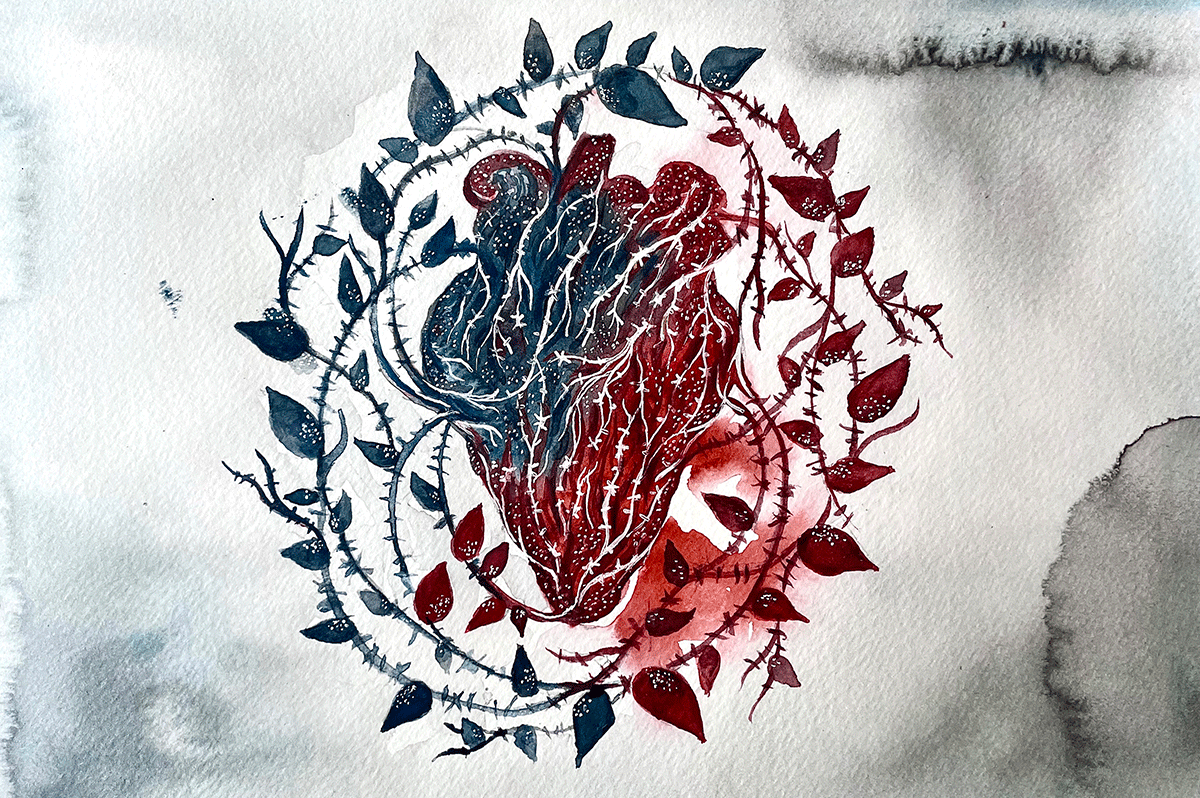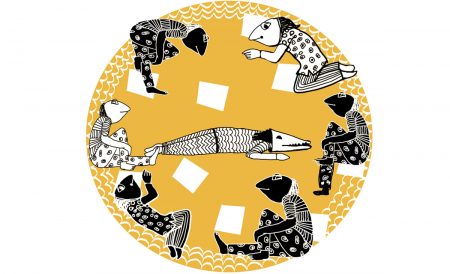The Third Eye invited Maitreyi Misra of Project 39A to help us think through our central idea: why do we need a feminist way of looking at crime, and how does that help the larger goal of social justice?
Project 39A is inspired by Article 39-A of the Indian Constitution, a provision that furthers the intertwined values of equal justice and equal opportunity by removing economic and social barriers. Using empirical research to re-examine practices and policies in the criminal justice system, Project 39A aims to trigger new conversations on legal aid, torture, forensics, mental health in prisons, and the death penalty. You can access their discourse building work here.
TTE: When we say ‘a feminist way of looking at crime’, what do you think it means? What are its possibilities?
Maitreyi: By a feminist approach, I specifically mean the ethics of care articulated by the philosopher Virginia Held, which understands that people are intrinsically interrelated, as opposed to the model of the independent, self-sufficient individual of liberal theory. Care ethics also challenges the traditionally accepted ‘correct’ way of understanding the world as masculine — with its ideas of right, wrong and the constituents of moral action. Conceived by Professor Carol Gilligan in the 1980s, this understanding of ethics had a great impact, and the people working in this field began thinking of ways to apply care ethics to the law. I think the criminal justice system is an important area that we might want to apply that approach to.
The ethics of care also pushes back against a unidimensional approach towards both the victim and the accused. They may be labelled as such in a specific context, but that is not all they are; their identities must not be restricted to these labels.
Hence, a feminist lens on crime takes account of the criminal act, but is not solely concerned with it. By which I mean that a feminist lens allows us to look at crime not just as the outcome of an individual’s actions, but also in the light of its context and relationality, and accounts for those aspects as well. This lens would require us to pull back from the moment of a particular violence and look at the larger contexts: the one in which the crime was situated, and the one in which the perpetrator came to be. And therein lie the possibilities.
Applying a feminist lens to questions of crime and criminality requires us to not focus on individual causes of crime and punishment, but on the breakdown in collective, familial and societal relationships that engenders violence. A feminist ethic guides us to paths that move away from looking at the crime or the criminal in a vacuum or as the only legitimate starting points.
Generally, conversations on feminist thinking and crime focus on sexual violence (perpetrator male, victim/survivor female), and our responses to it encompass thinking about changing social attitudes to sexual violence, the survivor’s needs, the offender’s accountability (often in terms of punishment and often punishments other than the death penalty). But, I think, it is equally important to talk about a feminist ethic when it comes to other offences; for instance murder or different offender and victim/survivor profiles, such as a female offender and male victim or a child victim.A feminist ethic would locate a large part of individual and collective violence in notions of empathy, and it won’t stop at a simple ‘the offender had no empathy for the victim’ narrative. Instead, it would also look at the kind of care and empathy provided to the offender by those around him; particularly and most importantly the State. Did the State do enough to nurture and care for this person throughout their lives? What values has the State been promoting generally, which, in turn, have played a role in the offender’s life?
This is not to say that the person perpetrating violence should not be held accountable — that is a necessary part of a feminist ethics; but questions of responsibility and accountability, the quantum and modes in which they are imposed need to be in line with that larger ethic.
In short, a feminist way of looking at crime insists that questions of criminal justice should not be seen as distinct from questions of social justice.
How does a feminist framing look at the purpose and goal of punishment?
A feminist ethic challenges the widely accepted purpose and goal of punishment. It requires us to revisit fundamental questions such as what we mean by harm, to whom is it caused, and by whom. It will also enquire into the context of the person accused of the criminal act and the environment they grew up in; it will incorporate those aspects in the quantum of accountability. A serious feminist inquiry into questions of crime and punishment would need to undo a lot of assumptions built into the system and redesign the way we approach the world around us.
For instance, it will need to challenge the widely accepted rationales for punishment, such as retributive justice (or theory of just deserts). Just deserts is centred on concerns of proportionate deservedness in punishment, that is: an accused deserves to be punished for the harm they have caused, and the harm inflicted on them by the punishment must not be more than the harm they have caused.
Questions of deservedness are built into almost all systems of punishment, so is the focus on harm caused by the offender and the proportionate harm that should consequently be imposed on them. But a feminist ethic might look at the material, structural, familial and social deprivations that the offender was exposed to as a young person and the State’s lack of response to these deprivations, in order to determine how much to punish, whilst ensuring ways to address the specific needs of the person. The latter would necessarily require a collaboration with the accused person/prisoner and cannot be a top-down, one-size-fits-all approach.
The other big possibility of a feminist lens is that it opens up ways of thinking about the State response to both - the offender and the needs of the victim/survivor - without pitching them as necessarily opposing forces.
Let’s take the example of a man convicted of rape. Rather than forever condemning the person with the label of a ‘rapist’, a feminist ethic might engage with their life story first and delay engagement with the fact of the offence. The emotional, psychological and physical safety needs of the victim/survivor are not the same as the offender’s needs and have little do with the offender’s life. Yes, the harm was directly caused by the offender, and justice for the victim/survivor would include accountability, but a feminist lens doesn’t conflate questions of accountability with suffering (either of the offender or of the victim/survivor).
What does a feminist lens open up that perhaps a gender lens doesn’t?
I think feminist thought incorporates and diffuses gender roles, and does not conflate male with masculine and female with feminine.
It seeks to look beyond gender as the primary lens of understanding a person, and enquires into roles people play vis-a-vis another person. In doing so, it opens up pathways that may lead us to incorporate and perform other identities as well. It recognises that just as a male/man has the potential to be a perpetrator, they can also be a victim and survivor (perhaps of different circumstances and injustices), and just as a female/woman and non-binary people can be victims and survivors, they also have the potential to inflict harm. An abusive mother and an abused daughter can be the same person; a male domestic help or cook (traditionally seen as female/feminine work) can be a muscular person (traditionally male attributes); a feminine woman driving a masculine man because he can’t drive… These are all examples of multiple roles and identities co-existing and flipping, depending on the context.
How does the law look at personhood, and how is that different from the way feminist thought looks at at the same?
Broadly speaking, the law — or more specifically for this context criminal law — looks at an individual as a fully autonomous, reasonable person who aspires for certain values and morals that motivate them. This is also a person on whom no external factors have any bearing and their motivations, actions, and omissions are only and only their own. And consequently follows the logic of accountability. So, it’s largely a context-absent view of an individual; theories of law have forever conceptualised the average person as an abstract, but with certain values/morals/attributes coded into them. These values and attributes are of course similar to those who have theorised these concepts — middle class, often white, often middle-aged men.
Feminist thought allows for a fuller account of the perpetrator — in not only attributing responsibility — but also in answering crucial questions such as what deprivations (for example, emotional, social, material, opportunities) did the person face, what the purpose of that individual’s punishment should be, and what that particular person needs.
In that sense it sees the individual as a person who is continuously moving in different ways, rather than as an entity fixed in time and space.
Feminist thought would also change the way we conduct our trials — not in its core principles — but in the way the system responds to the person. Generally, persons who may be accused of really serious offences such as murder or rape, are viewed with scepticism when they present an account of their lives, the crime, their experiences et cetera. Feminist thought would honour that person’s account and not disbelieve it because they’ve committed an offence. That is not the same thing as always and fully believing that account, but it means that the system and person need to work together to ensure a sense of justice towards the accused, the victim and society.
It’s a complicated balance, but I think it’s important because, once a person is convicted, the sense of injustice that the system inflicts on them is so intense that they in turn mistrust the system.
They are often not heard by the system; the judicial process and well-entrenched perspectives dehumanise prisoners and the accused, scorn and scepticism often accompany the manner in which people in the system interact with them, lawyers don’t often meet their clients (who in turn might be quite poor), almost nothing is explained to or broken down for the accused. No one trusts each other because fairness becomes only a legal requirement, not the need of a relationship.
Does the feminist framework allow for you to see the prison-social system continuum?
Yes! That’s one of the most important contributions that feminist thought can make to criminal justice, I think. While we have ‘reformation’ as a goal of punishment, it’s a bit of an oxymoron. You can’t punish someone and ask them to evolve at the same time — unless you want them to evolve in ways that you think is best for them, rather than helping them evolve in ways and areas that they think they need to work upon.
I think a feminist framework allows us to separate the idea of punishment from the idea of accountability. Those are two related things but have separate accounts.
We can still call it punishment, but feminist thought would require the way we code ‘punishment’ to change. Punishment needn’t only be about ‘security’. Prison structures and the institutional perspective in prisons often perceive and treat prisoners as potential security threats and prison officials as security enforcers. A potential security threat is also a potential suspect and this suspicion taints all aspects of prison life. An ideal prisoner must conform to certain notions of a good prisoner-citizen in order to be removed from this suspicion. However, prison needn’t be about the State trying to force a certain image of how a person ought to be, and it needn’t be about constantly delegitimising prisoners’ experience. So, the starting point of the system’s engagement with the prisoner has to be a fuller account of their life (as much as they may want to relive), from a position of mutual respect, moving to trust, and developing a collaborative approach in order to understand what the prisoner needs.
Perhaps it all sounds too idealistic and too far down the road, but that needn’t stop us from starting small, making changes that are actually not too difficult and drastic, and start bringing about change. For instance, changing the mindset that I encountered often in my work with death row inmates — that people convicted of serious offences or people sentenced to death will always lie. Or removing the explicit scepticism that is often present in prison manuals, such as: if a prisoner complains of a mental illness, first make sure they are not feigning the symptoms. Why this qualifier? That elimination is a part of regular psychiatric/psychological evaluations, but we don’t see this scepticism in the free community!
How does a feminist way reveal the limitations and fractures within legal frameworks?
I think too much of the legal framework and legal system, particularly criminal law, is focused on treating all individuals as the same, because of its interpretation of equality, equal treatment, and equal process. All laws should apply equally, yes, but what does equal treatment mean? We all know how that has translated in actuality. Most people in prison are poor and marginalised — for instance, the Death Penalty India Report (2016) found that over 70 per cent of death row prisoners were economically vulnerable, or the recently released Prison Statistics India (2022) by the National Crime Records Bureau found that close to 40 per cent of the prison population had not completed Secondary School (Class 10) and over 25 per cent of the prisoners were ‘illiterate’.
The overrepresentation of economically vulnerable groups in prison is not because only poor people commit crimes; it is people from socio-economically vulnerable and marginalised communities who most often get the death penalty, not because they are the most deserving of such a punishment.
People are not treated equally - status, class, wealth, all play into the power equation.
The harsh response to increased criminal activity is another example of seeing individuals as equally placed. It rests on the assumption that everyone sticks to the same moral code, everyone understands it in the same way, everyone has the same opportunity to contribute to it, everyone has the same conditions of life that guide them. It’s simply not true.
But feminist thought does push back against one set of unmalleable rules: it does push back against seeing and treating individuals without context. Its focus on interdependence, relationality, context, care, empathy and practice, is better suited towards ensuring that everyone feels they have been treated with respect, and for making the system more effective. To a very limited extent, this approach exists — for instance there’s some scope for taking into account circumstances of the accused when imposing punishment, or the now-growing call for accommodations for persons with disabilities during trial.
I also think the system (which in turn is really administered by the State) is uncaring towards all stakeholders — the police, the accused, the victim, judges, lawyers, prisons. It’s made the rules; in many cases it’s created the problem (for instance, legislatively mandated shorter periods for investigation creates pressures on the police that remain unresolved) and now it’s up to the stakeholders to not just navigate, but also resolve the problem.
The ever-shortening trial periods, for instance. The legislature constantly demands it but without caring about capacity, and the impact on the accused or the victim. Faster trials do not mean justice, they probably contribute to an overall increase in injustice! On the other hand, extremely long trials are not just either, but I don’t think we’ve taken any steps to understand the system as it functions. We’ve short-circuited it essentially by saying — the opposite of long trials is short trials, so let’s impose that!
Let’s take another example: Prisons, which are extremely important sites of fulfilling one of the other purported purposes of punishment, that is, reformation.
Prisons in India are an extremely disempowering site. Reformation rings a bit hollow when the entire logic of prison is about security, rather than trust-building and therefore empowerment.
If we don’t put the needs of prisoners at the centre of something as lofty as the idea of rehabilitation and reformation, it is not just ineffective - it is disempowering.
Could you give us some instances where you have used the feminist lens in your work? What did that help reveal? For example, Project 39A’s work with death penalty?
Our mitigation practice definitely uses a feminist lens in all aspects of its work. It is necessary to do so. The need to build trust with the client, respecting their experience, their version of their life both outside and inside prison, and of course their families. The work, in principle, requires us to look at the person on death row in their context and bring their story before court. It is also evidence-based, and ensures that we bring forward an accurate account of the person before the court. It’s a way to practice care ethics and extend it into the rigid criminal justice system, allowing courts to engage with it to a certain extent. For instance, the recent judgement of the Supreme Court in Manoj and Ors vs State of Madhya Pradesh and its articulation of reformation is an example of care ethics seeping into ideas of punishment.
Our litigation practice is also care-based, because one of the core principles of legal presentation is to honour and respect the voice of the person we represent. This is not to say that we take on board everything the client says, because we do present them with their contradictions, and we do not dilute the divergence in the legal or personal narrative. But we do it without entirely delegitimising them.

Another way in which we apply the feminist ethic is by keeping in touch with our clients through letters and sending to them books they want to read, or art supplies so that they may want to express themselves through art. Our recently launched online exhibition Capital Letters is an effort to extend the results of this care practice with the public. It curates experiences of death row incarceration and its mental health consequences through their artwork and stories in the person’s own voice. The idea of the exhibition is to imbue public conversations around the death penalty — which often centre on the evil stereotype of a person sentenced to death — with the perspective of care.
Read in Hindi.





